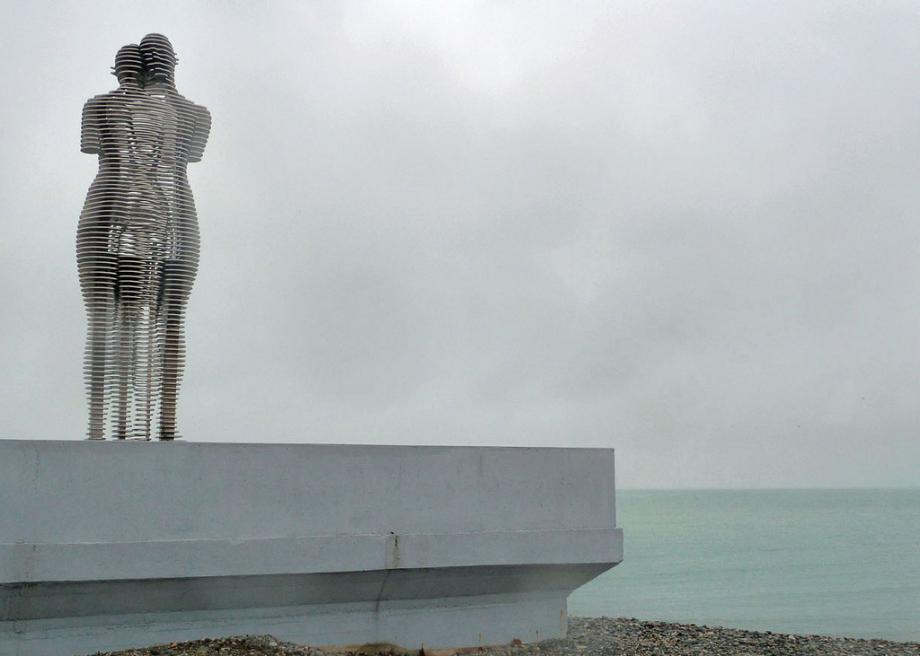Atlas Obscura on Slate is a blog about the world’s hidden wonders. Like us on Facebook and Tumblr, or follow us on Twitter.
Westerners are all familiar with the tragic tale of Romeo and Juliet, but how about Ali and Nino? These doomed lovers inspired a colossal automated statue named after them, which now stands by the seashore of Batumi, Georgia.
The story, first told in the 1937 Austrian novel Ali and Nino, is a familiar tale of lovers who end up in tragic circumstances that keep them apart. As opposed to warring families, in Ali and Nino’s case, it was the first world war. Ali, an Azerbaijani Muslim, falls in love with a Georgian princess, Nino. Sadly, after they are finally able to get together, the war hits home, and Ali is killed. The author of the novel is unknown, credited to the alias Kurban Said. The title has become a literary classic in the area and is considered to be the national novel of Azerbaijan.
It was this famous love that inspired Georgian artist Tamara Kvesitadze to create her monumental moving sculpture in 2010. The giant metal artwork, also known as the “Statue of Love,” consists of two somewhat transparent figures made of stacked segments. Each day at 7 p.m., the two figures slide toward each other, eventually merging as their segments pass between each other, never truly connecting. Sad stuff.
The whole automated performance takes about 10 minutes and is often lit with bright, changing colors that give the figures even more life than their stark metal bodies usually project.
Submitted by Atlas Obscura contributor melsand2000.
For more on Ali and Nino, visit Atlas Obscura!
More wonders to explore:
